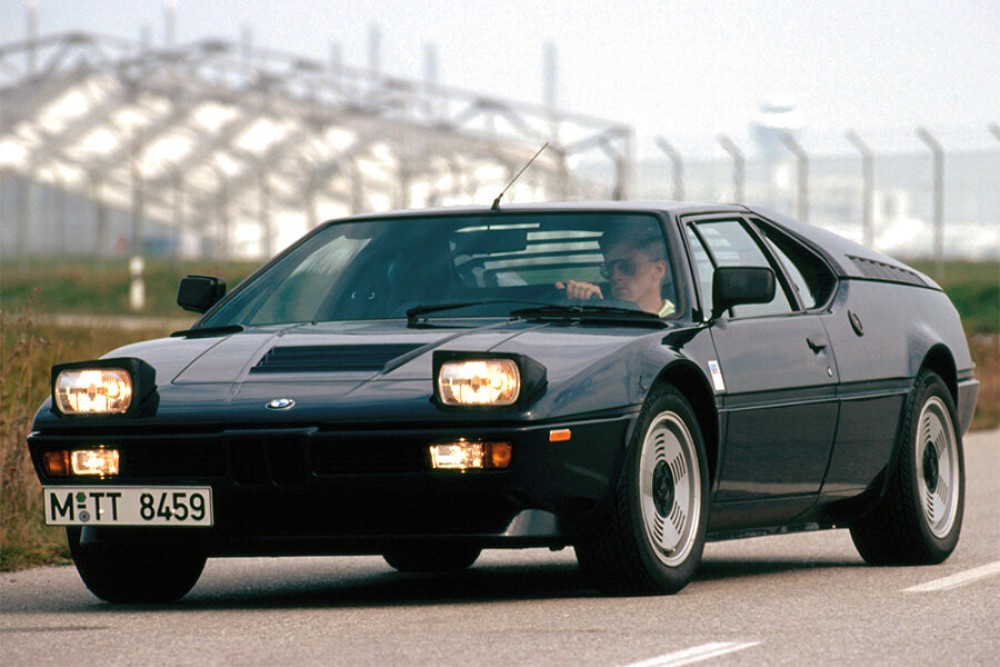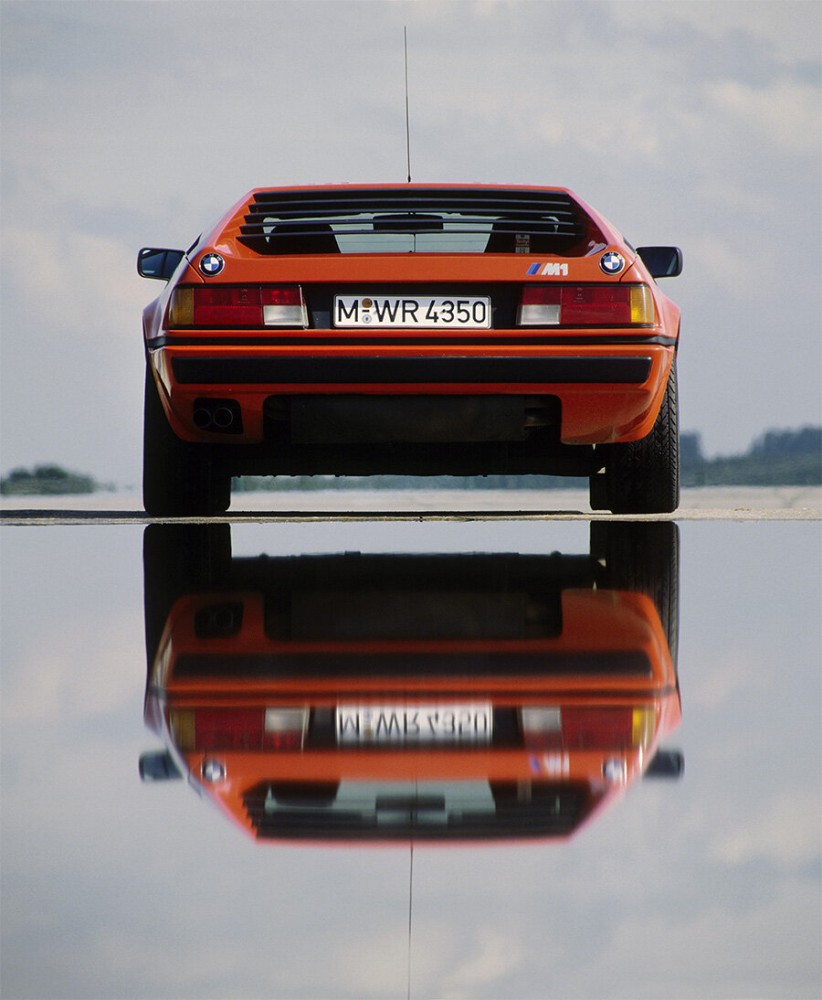This website uses cookies in order to enhance the overall user experience.

Throughout the 1970s, BMW was working heavily on their motorsport project. This resulted in a few impressive high-profile supercars that significantly boosted the marque’s reputation, regardless of the dominant marque in the GT race category still being the chief high-performance vehicle producer of Germany – Porsche.
Regardless, Jochen Neerpasch, the manager of BMW Motorsport, set out to produce a mid-engine supercar capable of winning the much respected Group 5 World Championship for Manufacturers of 1978. This car became the E26 M1, which BMW commenced pursuing from halfway 1975 onward, right before the Group 5 ruleset of the FIA was put into play. Group 5 was geared toward completely modified Special Production Cars that changed everything but the bonnet, roof, door profile, and the engine position and block of the original model, which led to its nickname the “Silhouette Forumula.”
Realizing and assembling the M1
In order to participate in Group 5, a car producer had to homologate their base model in one of the Groups 1 – 4 first. Therefore, BMW pursued Group 4 for their M1 model, for which they needed to produce at least 400 examples in 2 years’ time. Neerpasch got authorization to pursue this project as long as it wouldn’t affect any production of BMW’s other cars at the time. To make sure this condition was met, a motorsport expert was brought in – enter Lamborghini. This Italian manufacturing company had just gotten more than a million euros invested by its government so it could partner with BMW and ensure Italian jobs while they were at it.
Regardless of the Italian partnership and government investment, the M1 project still didn’t run smoothly at all. Only 7 prototypes were out when production was planned, which caused BMW to disband the project early in April. However, luckily a few employees who’d worked at Lamborghini before had setup Italengineering close by, where they were able to finish the M1’s design in time.

Upon finishing the design, BMW had a highly complex assembly line to manage. Marchesi constructed the chassis, while fiberglass expert Transformazione Italian Resine took care of the bodywork – both in Modena. Then Turin-based Ital Design took care of part of the assembly, which then sent the M1’s in the making to the Stuttgart-based Baur Coachwork for the cars’ interiors and engines. Finally, the last checkups were done at the Munich-based factory of BMW Motorsport.
BMW E26 M1 breakdown
Giampoalo Dallara, the chassis master of Lamborghini, designed the MacPherson strut suspension and square section steel-tube spaceframe. In this, coil springs, adjustable gas-filled Bilstein dampers, and wishbones of varying lengths were fixed to every corner with anti-roll bars fitted at the ends. This built was perfect for the innovative super low profile P7 tires by Pirelli and the servo-assisted ventilated disc brakes powered by hydraulic circuits segmented per axle. Finally, on each side in front of the rear axle, 2 fuel tanks were placed with 58 liter capacity each.

The M1 Type M88/1 engine was a straight-6 dual overhead camshaft, which came from the 3.5 liter M30 that is also featured in these days’ BMW series 6 and 7. Originally, this engine came from an E26 M1 precursor, the 1968 E9 CSL which was powered by the 3-liter M30. The M1 engine’s 3453cc displacement didn’t involve any changes, but it was upgraded with longer connecting rods, new pistons, Kugelfischer mechanical fuel injection, and a forged steel 7-bearing crankshaft. In addition, the engine was installed with the familiar CSL race engine 4-valve cylinder head with each cylinder having separate 46 millimeter throttle bodies. Finally, a Magnetti Marelli electronic ignition uprated the dry sump engine even further.
In effect, at a 9.0:1 compression ratio, the M1’s engine generated at 6500rpm 277 breaking horsepower, and at 5000rpm a 239 pound-feet of torque. Transmission, in turn, went via the ZF DS25 5-speed gearbox, with a hydraulic twin-plate clutch by Fichtel & Sachs and limited-slip differential. With all these upgrades, BMW’s E26 M1 only took 5,5 seconds to reach 100km/h and was able to push through to a good 262km/h top speed.
The E26 M1 design
The E26 M1 appearance was inspired by its precursor, the E25 Turbo from 1972 which was designed by Paul Bracq. In this, the Giorgetto Giugiaro designed glass-reinforced plastic E26 M1 body didn’t contain the elaborate blisters and wings that many of its late ’70s contemporaries featured, and was connected to the chassis at Giugiaro’s studio – the Ital Design HQ in Turin.

While BMW’s traditional nose-mounted kidney grills were kept, the M1 design largely differed from other BMW models. The retractable headlights made their debut in the M1, and the chin spoiler in matt-black was the only visible aerodynamic feature. In “Miura-style,” the rear window slats were placed down from every rear buttress, while the engine vents across the sail panels and tail fascia matched its matt-black color.
Interior
It was really the M1’s ergonomics that were unmatched at the time. Characteristically German, there was great attention to detail inside, with the switchgear and instrumentation – which were mostly taken from other BMW models – effectively placed in plain view. The door panels, transmission tunnel, dash, and central console were all veneered in black leather. While the Recaro seat bolsters contained the same black leather, the centers of the doors and seats were made of grey fabric in order to match with the carpet. Altogether, the E26 M1’s curb weight came down to 1300kg.

The standard E26 M1 came with A/C, electric mirrors and windows, heated rear window, Becker radio & cassette player, and a BMW Motorsport 3-spoke leather veneered steering wheel. Although the limited options only included lowered seats, mud flaps, and fitted luggage, a selection of M1 retrofits contained the body kits from Group 4.
Prototyping and production
In 1978 the Press got a first look at the M1 prototype, which was featured together with the Group 4 version that was covered in the familiar BMW Motorsport decorations. Although production delays had ruined Neerpasch’s original homologation plans, the M1s of Group 4 turned out to be eligible for a single production “Procar” championship that supported various F1 races in 1979 and 1980.
From September to December 1978 the first few M1 show and test cars were finished, which made their public debut at the October 1978 Paris Motor Show. Subsequently, in January the year after, the first M1s finally were delivered, though usually at significant discounts to make its expensive retail price accessible to the public. The M1s production already in July of 1981 before example #400 could roll out the factory, with 399 production models finished. Homologation in Group 4 was approved a few months before that, on the 1st of April in 1981, which was 3 years after the original date that it was planned for.

